We all agree that going on boat trips and cruising through the waves is one of the best activities you can partake in. Being propelled forward by a strong motor is an amazing feeling. But, as a captain, you need to be aware of the condition of your engine.
If your boat has an outboard motor, you have probably wondered how hot it should run. It is a common concern, especially among novice boat owners. If you are wondering about the right temperature for your engine, we will answer your question in this article.
We will take a look at different motors and provide you with all the necessary info. With the information we provide, you won’t have to worry about the temperature of your motor being too high ever again! So, let’s begin!
An outboard motor should run at temperatures between 118F – 160F (47C – 70C) if it is a 2-stroke motor, or 115F – 125F (46C – 52C) if it is a 4-stroke motor.
2-stroke motors are more common on boats. The temperature shouldn’t go over 210F (100C) because that may cause the motor to overheat.
Table of Contents
Outboard Motor Operating Temperature
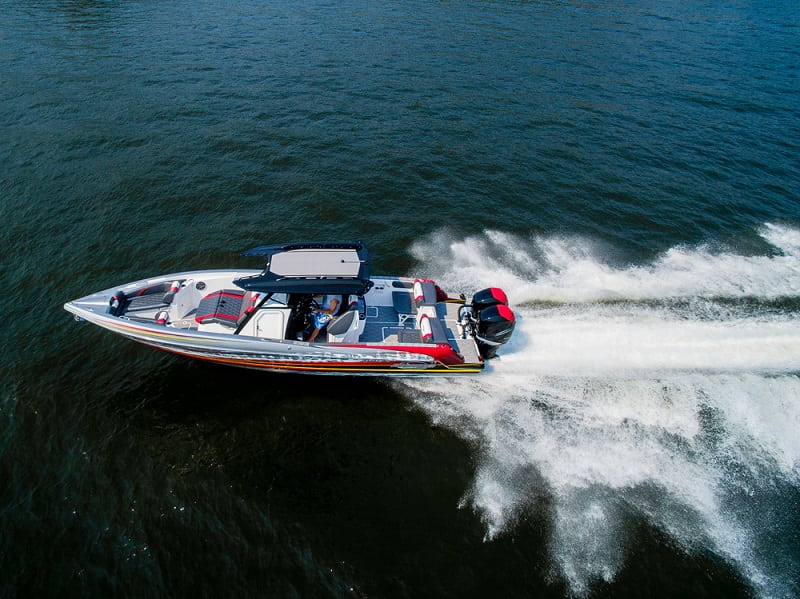
The operating temperature of your outboard will depend on the motor type. Let’s take a look at the general information you need to know:
- 2-stroke motors should operate between 118F – 160F (47C – 70C).
- 4-stroke motors should operate between 115F – 125F (46C – 52C).
A 2-stroke (or 2-stroke cycle) motor is a type of internal combustion engine. It performs two piston strokes (up and down movements) throughout a power cycle. This cycle is finished in one crankshaft revolution.
In a 2-stroke motor, the intake and exhaust (or scavenging) activities happen simultaneously. This is the process of replacing exhaust gas with fresh air and fuel.

What this means is that they occur at the end of the combustion stroke and the start of the compression stroke. These strokes are the up-and-down movements of the pistons.
These engines are more common and frequently have a high power-to-weight ratio. The highest power in them is accessible in a small range of rotational speeds known as the power band. This means that you can get maximum acceleration during these small periods.
Compared to 4-stroke engines, 2-strokes have fewer moving parts.
On the other hand, 4-stroke motors are engines where the piston does four separate strokes while the crankshaft is rotated. These motors are more common in vehicles used for land transport, such as automobiles, motorcycles, and trucks.
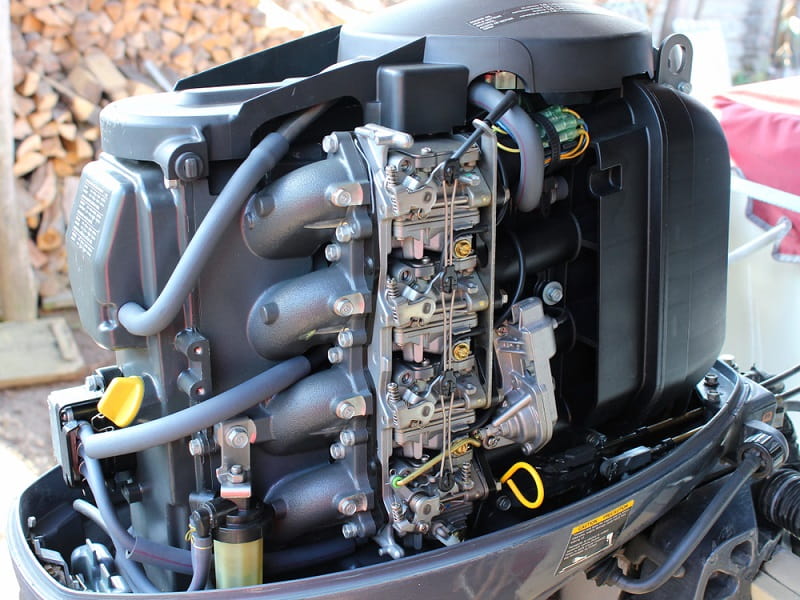
This means they aren’t as common in boats. Also, the exhaust emissions from a 4-stroke motor contain greenhouse gasses and other forms of air pollution in large quantities.
In simple terms, they pollute the air. This is why many major jurisdictions are looking to phase them out completely.
Now that we know all this, we can see that 2-stroke motors have a higher operating temperature than their 4-stroke counterparts. Since we’re mostly boat owners here, it is safe to say that our vehicles probably have a 2-stroke motor. This will be true in the majority of cases.
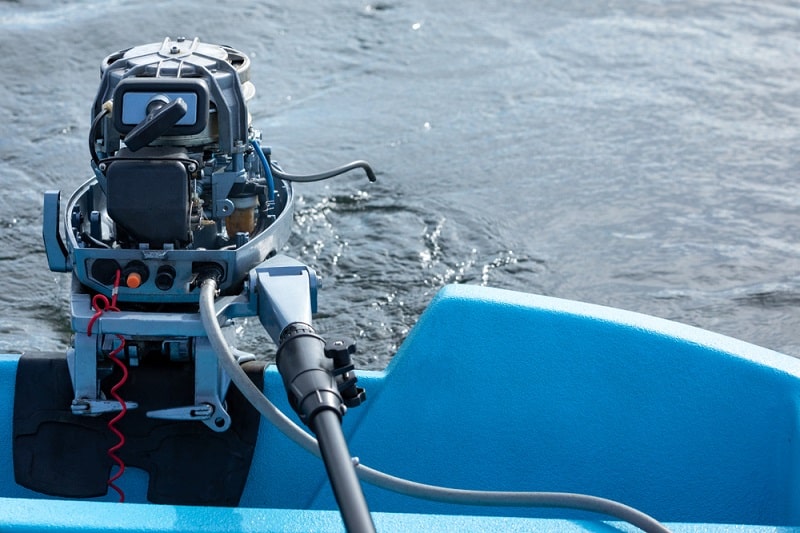
We see that 2–stroke motors can run anywhere between 118F – 160F (47C – 70C). On the other hand, 4-stroke motors can run between 115F – 125F (46C – 52C).
If your motor is running much higher than this, you should think about taking some precautionary measures. Of course, you should shut down the engine as soon as possible.
Once that is set, have it looked into by a professional. If necessary, they should fix it before it is used again.
These temperatures take normal speeds into account, which we will talk about later. Naturally, if you’re going faster or speeding, the temperatures will go up as well. There is no need to worry if you go a bit above these limits.
What about different motor brands? Does this make a difference? Let’s take a look!
Outboard Motor Operating Temperature in Different Brands
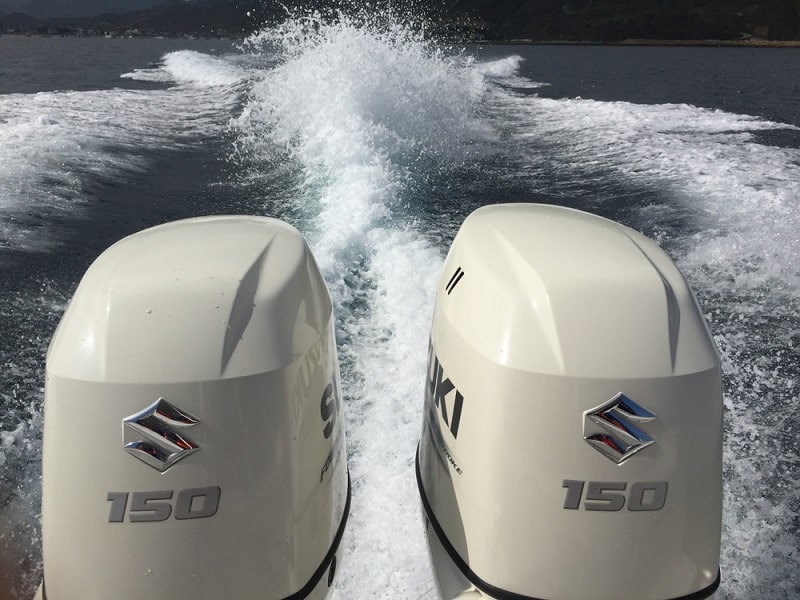
You now know the difference in operating temperatures between 2-stroke and 4-stroke motors. Does this change between brands?
Let’s take a look at some of the more popular ones and their operating temperatures. Also, we will see when you can expect an overheating warning.
| Brand | Operating Temperature | Overheat Warning |
| Johnson | 143F (60C) – 150F (65C) | 212F (100C) |
| Mercury | 143F (60C) – 160F (70C) | 220F (104C) |
| Yamaha | 145F (62C) and 165F (74C) | 220F (104C) |
| Suzuki | 140F (60C) and 155F (68C) but can go higher, up to 185F (85C) | 200F (93C) |
| Honda | 140F (60C) and 180F (82C) | 210F (100C) |
| Tohatsu | 140F (60C) and 180F (82C) | 210F (100C) |
You can see that most brands do have similar operating temperatures. They often have 143F (60C) thermostats. Although, you can expect them to run below that temperature at idle speeds.
At full throttle, you can expect the temperature to go above 160F (70C); however, this depends on multiple factors.
The water temperature is one of them. If the seawater is cold, you can expect your motor to run at lower temperatures than usual. On the other hand, if the temperature of the seawater is high, your motor will run at hotter temperatures. It actually makes sense, doesn’t it?
Another thing that can influence the temperature of your motor is the weight you’re carrying on your boat.
For example, you may have too many people or some type of cargo on your water-traveling vehicle. In this case, the engine will need to use much more power and will be hotter.
We named some of the most popular brands so you can compare them. Among these, Johnson and Mercury are probably the most well-known. As you can see, they all share similar operating temperatures.
In general, you should make sure your outboard motor never runs higher than around 210F (100C). If it does, you might need to have it checked and possibly serviced.
Why Is My Outboard Motor Too Hot to Touch?

Now that you know how hot an outboard motor should run, there are other things to watch out for. One such thing is overheating.
If your outboard motor is too hot to touch, it is not necessarily time to panic. If the thermostat shows an average operating temperature, it could just be the result of some hotspots on the head of the engine.
Also, if it is too hot when you start it, it could be the result of all cylinders starting to work and heating up. This is also normal and is no reason to worry.
However, it can also be a sign of your outboard motor overheating, which is a serious problem.
There are some other signs that show that your outboard is overheating. These include:
- A hot dash gauge, meaning it will go from green to red.
- Steam coming from the motor, which is the most obvious sign.
- Your motor starts very slowly. If it takes more time to start than what you’re used to. It might take a few tries to start, or it can take up to a minute to get it going fully.
- A weak engine; the power of your motor has decreased and it doesn’t go as fast as before.
Causes of Outboard Motor Overheating

Of course, your outboard motor will also be too hot to touch. There are several things that can cause your outboard motor to start overheating. Let’s take a look at some of them.
- Water pump failure can cause overheating on outboard motors.
- Low engine oil or dirty engine oil can cause overheating, as well as using the incorrect grade of engine oil.
- Clogged exhaust manifolds.
- Thermostat failure, or a damaged thermostat.
- A damaged or inoperative impeller can make your motor overheat.
- Operating your boat through polluted water or a place with a lot of algae.
- A corrosive scale formed by sailing through saltwater can block the cooling system. If you don’t flush your outboard motor often enough (or long enough), salt can build up in the cooling system. This can cause overheating and reduce engine life.
- An outboard motor that is mounted too high can overheat since it will be tilted too far out of the water.
- Blocked water intake for the water cooling. This can happen due to oxidation, which will stop the water from circulating. You can flush your water cooling system using vinegar. But sometimes, a professional will need to clean it with a mild acid.
- Spraying silicone protectant over a motor that is still running.
These are some of the most common reasons why your outboard motor will overheat. Now, let’s see what you can do if you notice that your motor is overheating.
What to Do if Your Outboard Motor Is Overheating?
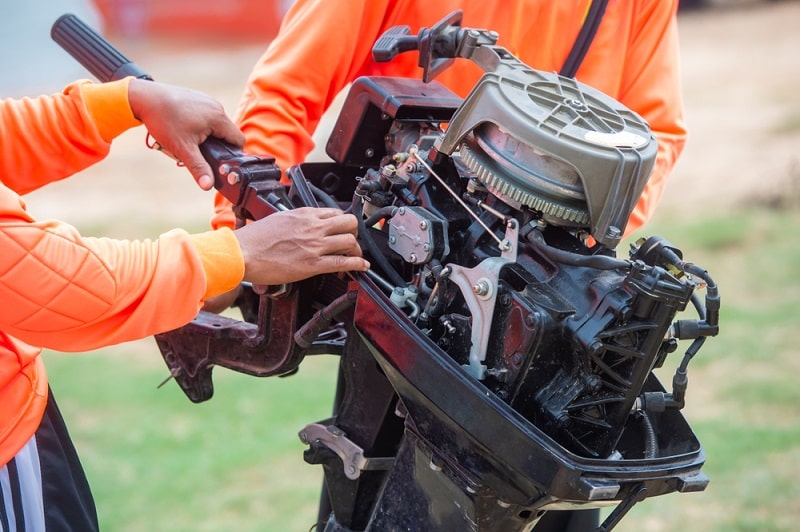
There are several solutions you can turn to if you notice that your engine is overheating. Of course, the first thing you need to do is switch off the engine. Once you have done that, check out these solutions.
Examine For Blockages
Overheating can happen if your water strainer is clogged. If your outboard motor is overheating, make sure to check whether it is blocked.
Also, check for obstructions in the thru-hulls and in the inlet pipe for the cooling system.
Check The Oil Level And if the Oil is Clean
If you are using a 4-stroke engine, you can use a dipstick to see if your oil level is good or not. In the case of 2-stroke engines, check the separate oil tank. Insufficient oil may cause overheating.
Then, check if any water has entered the system and mixed itself with the oil. If your oil has a milky color there is probably water in there, meaning you should replace it.
Vent the Motor
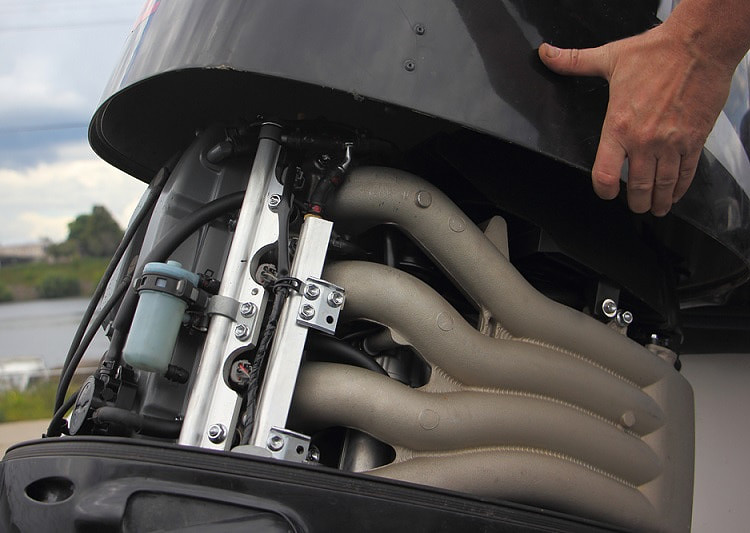
Those that are mechanically inclined can try opening the engine and letting the outside air cool it. Keep in mind that this is not a long-term solution. However, it might enable you to get some more mileage out of your outboard motor if you find yourself in a jam.
Get Professional Assistance
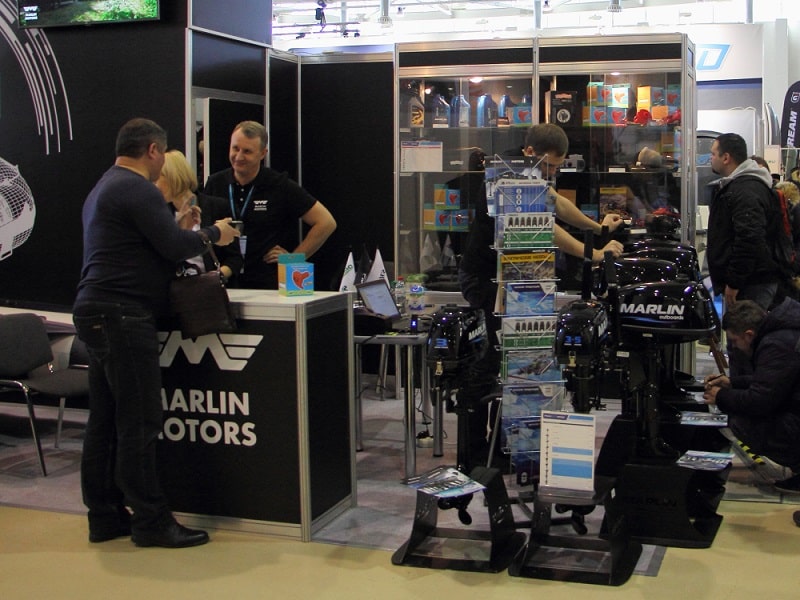
If you’ve tried all of our solutions and your motor is still overheating, it’s time to seek professional assistance.
Of course, if you find that a part of your engine is damaged, you should call a tow. The damage might be impossible to repair without the help of a professional, so you shouldn’t try to do anything by yourself.
Conclusion
How hot an outboard motor should run depends on several factors we talked about in the article. The most important one is whether it is a 2-stroke or a 4-stroke motor.
2-stroke motors operate between 118F – 160F (47C – 70C), while 4-stroke motors do it at temperatures between 115F – 125F (46C – 52C). 2-stroke motors are more commonly used on boats and usually run a bit hotter, as you can see.
The operating temperature of your outboard motor will also depend on the manufacturer. Most newer motors have thermostats that run at 143F (60C) and usually have a temperature of 160F (70C) at full throttle.
This doesn’t mean that it can’t go higher than that. However, make sure it doesn’t go above 210F (100C) because this may cause your motor to overheat.

I created this site to help people – to help you – with your boat problems. Instead of helping one person at a time, I want this website to be the “one-stop-shop” for everyone’s boating concerns. Read more.

